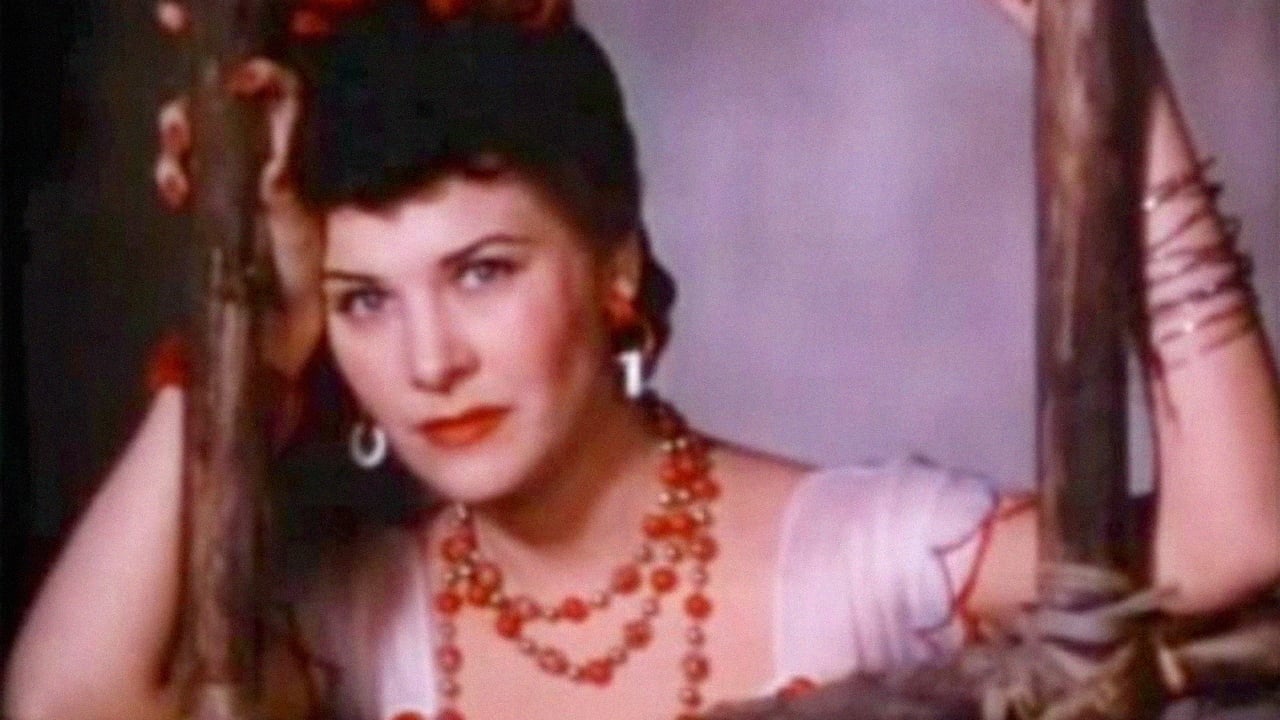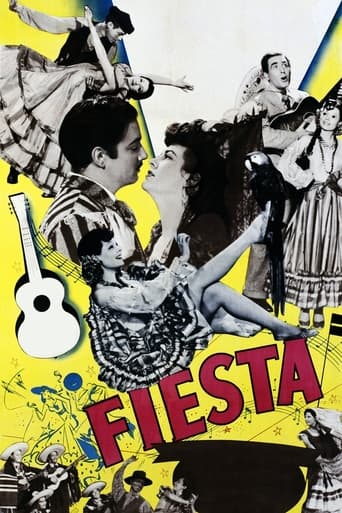

Shot on just the one set crowded with sombreros and flamenco dresses, this tinny studio-bound Hal Roach streamliner is very much a throwback to the early Technicolor musicals 'La Cucuracha' (1934) and 'Dancing Pirate' (1936), and further back still to the concluding Technicolor portion of the 1929 'Rio Rita'.Despite singing a song with the preposterous title "Never Trust a Jumping Bean", of the two femmes the tiny Armida far outshines top-billed opera star Anne Ayars (who looks considerably older than Armida despite being seven years younger). And Armida has two ranches! There's very little plot to speak of, although a brief comic interlude when a character falls into a tub of flour and is taken to be a ghost reminds us that this is a Hal Roach production.
... View MoreObviously at 45 minutes it was only going to be a bottom feature for double bills and also served to introduce Anne Ayars to film audiences. At 22 she looked a lot older, which is probably why she didn't make much of a splash. She featured in "Dr. Kildare's Victory" and "Apache Trail" but only made a few films. She played Cholita, but was outshone by the dazzling Armida as Cuca. Armida was a beautiful Mexican dancer who's early credits include a sultry dance in "The Show of Shows" (1929). Another supporting player to watch was Antonio Moreno as Cholita's uncle, Don Hernandez. He had a huge career starting with bit parts in early Biograph films. His most famous role was as the stuffy boss in "It". When talkies came in he made a number of Spanish language films. He looks very dashing in "Fiesta".Cholita (Anne Ayers) returns to Mexico with her fiancé, pompous radio singer Fernando Gomez (George Givot in a performance that is little more than a caricature). He is a fortune hunter and switches his attentions to Cuca when he thinks she is rich.The Technicolor is there to showcase the vivid Mexican dances of which the film has plenty. Cuca sings and dances to a spirited song "Never Trust a Jumping Bean". Cholita sings "I'll Never Forget Fiesta" and the beautiful "La Golondrina".
... View MoreThis film probably would be of very, very little interest, were it not shot in colour. At least you can enjoy the magical reds and blues that have never been seen again since Technicolor process was replaced with cheaper and inferior ones. Amazingly enough, even as we are people from the 21st century, and are soon to celebrate Technicolor's one hundredth birthday (it began in 1917 with The Gulf Between, first two-strip Technicolor feature which has not survived), we still manage to be raptured by colour in these early films - especially if these only run for 45 minutes. The film features almost no plot, but at least a dozen songs - not bad ones - and the opportunity to see Anne Ayres, who a few years later became the leading lyrical soprano in the Metropolitain and returned to the screen only in 1951, when he was cast as Antonia in Tales of Hoffmann. Incidentally, she was the only woman in that film who actually lip-synced to her own voice. Her acting style is very sober and unassuming, so you might want to check out her other screen appearances.
... View MoreThis somewhat bland musical comedy isn't anything special, although as light entertainment it is at least watchable. The story revolves around some romantic tangle-ups that happen during a Mexican "Fiesta", but there's not really much depth to the story or the characters. Fernando is mildly interesting, but the rest of the characters are one-dimensional, and for the most part the cast does not succeed in getting much out of them. They wisely kept the running time short, and devoted a lot of it to the musical numbers. Since it was filmed in color, they must have had high hopes for it. And there are parts of it that are entertaining, but overall there's not enough for it to be of more than casual interest.
... View More